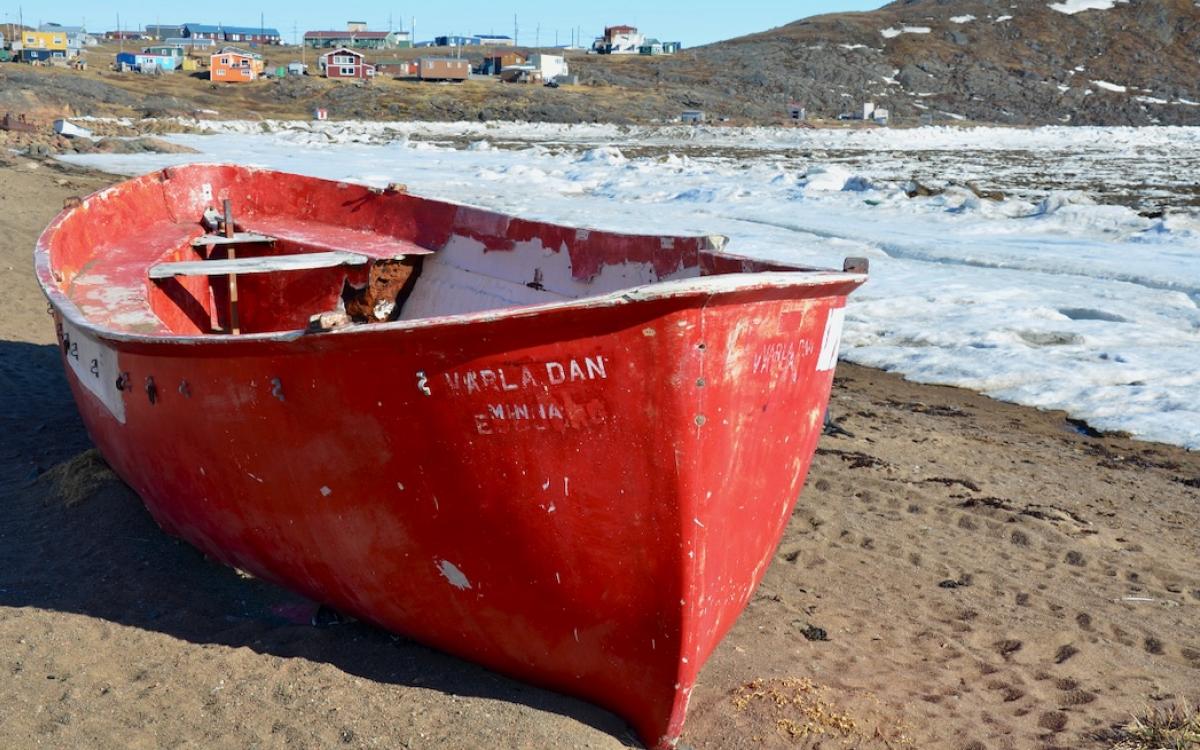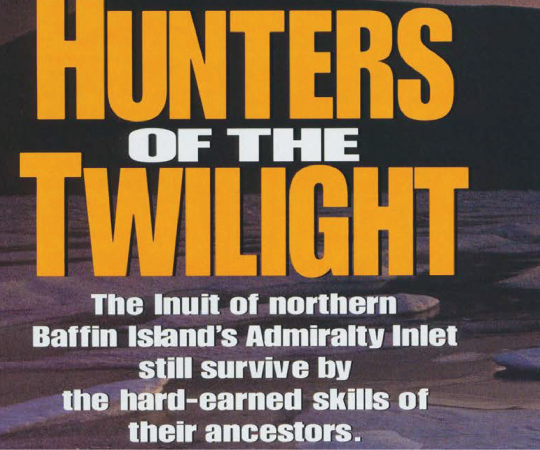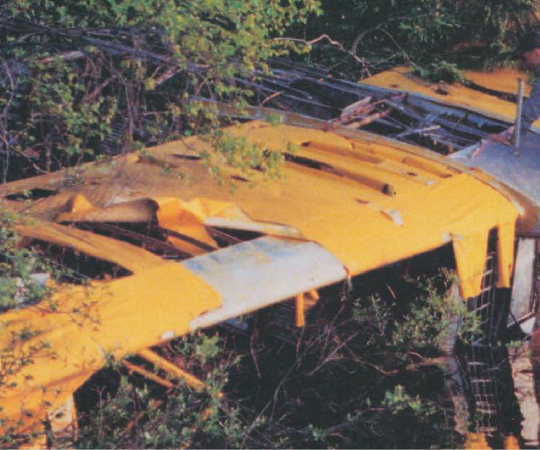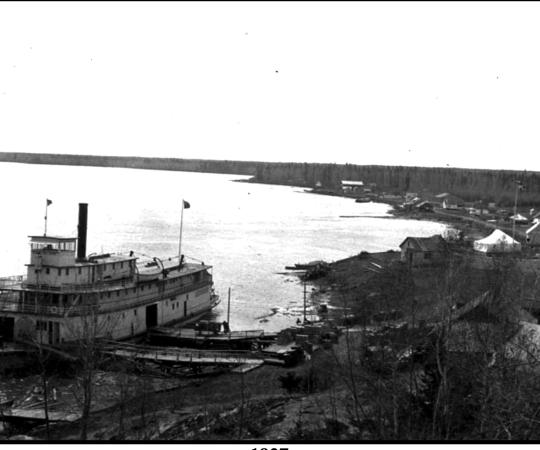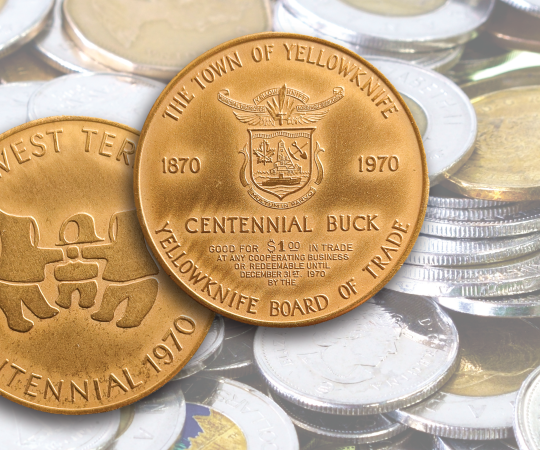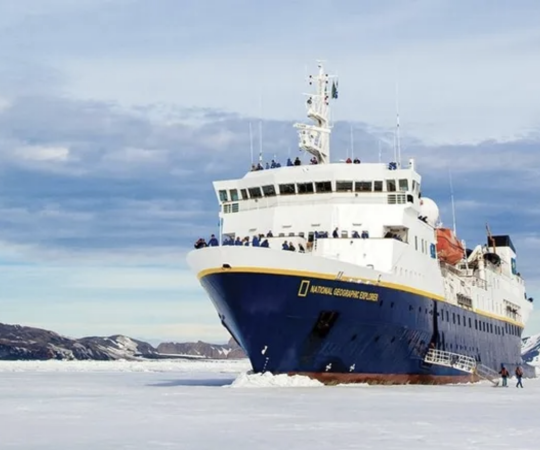What’s the first sight to see when visiting Iqaluit? In April, when CBC radio show host Tom Power asked that question in front of a live studio audience at Iqaluit’s Inuksuk High School, he—like many newcomers to the city—might not have understood the answer shouted back at him.
“The red boat!”
On a beach in the nearby satellite community of Apex, a red fibreglass lifeboat sits permanently grounded, abandoned and belonging to no one, alongside a series of Hudson’s Bay Company buildings. For locals, it’s a familiar sight and something of a tourist attraction. Anyone not from Iqaluit might recognize the red lifeboat from the White Stripes’ “You Don’t Know What Love Is” music video, filmed on the Apex beach while the Detroit-based, alt-rock duo was on a cross-Canada tour. When Bill Riddell moved to Apex in the mid-’80s, that red lifeboat was already on the beach, where it had become a fixture.
“People used to use it as a curiosity but nobody ever put it in the water,” says Riddell, who lived for many years in a house overlooking the picturesque beach. “Hopefully it stays there.”
Having recently visited Iqaluit again, Riddell was surprised to notice a gouge on one side of the vessel facing out to the bay—a hole that wasn’t there when his neighbour Bill MacKenzie put the red lifeboat on the beach.

As Iqaluit folklore goes, MacKenzie—an entrepreneur and known eccentric—acquired two lifeboats from the MV Minna, a Norwegian-built cargo vessel that had run aground in Brewer Bay, at Resolution Island, NWT in 1974. He hired Ben Ell, a former deputy mayor who regularly ran charters in the area, to make the 300-kilometre trek from Iqaluit to Resolution Island to fetch the vessels. What year that happened is hazy in local memory, as the two men both died in 2001.
“The details are sparse,” says Kirt Ejetsiaq, owner of Red Boat Properties Inc., who works out of the Hudson’s Bay building next to the boat. “But it’s cool. Everybody knows the red boat.”
Built in Arendal, Norway in 1960 as an ice-strengthened freighter, the Minna was first named the Varla Dan, and its homeport was Esbjerg, Denmark. The vessel was renamed in 1972 when it was sold to the since defunct Karlsen Shipping Company Limited. The summer it foundered the Minna was under charter by the Bedford Institute of Oceanography and tasked with a season of deep-sea hydrographic and geophysical surveys in the Labrador Sea, Davis Strait, and Lancaster Sound. But she would never return home.
Hydrographer Steve Grant was standing mid-deck on the Minna in ‘74 when the heavy currents flowing through Hudson Strait pushed the 84-metre vessel up and onto an uncharted shoal along Brewer Bay.
“I felt the ship shudder as we hit the shoal, and I thought, ‘That’s going to take care of this survey,’” Grant, now retired, says from his home in Nova Scotia. “A few hours later we were high and dry.”
The vessel’s captain would soon sanction the ship as unsalvageable. The crew and team of surveyors would spend the following week ferrying their shipload of valuable survey equipment onto shore. The Minna would sink fully that fall.
A popular but inaccurate myth of the red boat’s origin connects it with a Danish ferry called the Esbjerg that sank in World War II after hitting a mine. That’s because (confusingly) the red boat bears on its nameplate the Minna’s original port of call—Esbjerg, Denmark— along with the ship’s two names (the Minna and the Varla Dan).
Supposedly, that story goes, the sunken ferry’s lifeboat miraculously floated west into Frobisher Bay. Nunavut Senator Dennis Patterson, who owned the redboat’s sister lifeboat, says that story doesn’t hold a lot of water.
“I remember the bill of sale, in Bill’s long cursive writing,” he says, speaking of the purchase he made from MacKenzie 40 years ago (about $500 for the 20–some person lifeboat). Patterson was working in Iqaluit as a lawyer at the time, and he partnered in the boat-buying venture with a teacher, Bill Barnie. The two outfitted the lifeboat with an oak cabin crafted using scrap wood scavenged from the dump. They installed a new diesel engine that had been sitting unused in an airline hangar (purchased for only the unpaid freight fees), and a propeller also bought from MacKenzie. They christened the ship the Esoterica.
“It attracted attention because it was quite unusual,” says Patterson. Local hunters who walked by the build were keen to take the sturdy boat walrus hunting. Made to be steady in an open storm, the Esoterica didn’t go very fast, but it was good on fuel. “It wouldn’t plane,” says Patterson, but would “lumber along at five or six knots.” Barnie never found out how the boat rode because he took a teach- ing job in Whitehorse in ’84, before the Esoterica’s first sail. Patterson found a new sail partner, though, and the boat saw many an afternoon joyride, until one unfortunate night when it was left on the beach for a full tide, only to topple on its makeshift cradle and be left with a punctured hull. That was the end of the Esoterica’s sea days.

When the MV Minna first ran aground, Grant said the port-side lifeboat was launched as a precaution—though a few rattled crew members did use it to beeline for the nearby shore before the captain called them back. It was the navy who picked up the Minna’s precious cargo of geophysical and hydrography equipment and delivered it back south. In a first-hand account of the grounding published in a 2015 edition of the naval magazine Starshell, retired naval vice admiral Nigel Brodeur tells how he led that recovery, using landing craft and Sea King helicopters to bring the “irreplaceable” scientific equipment back to his ships.
Recalling his conversation with the Minna’s “disconsolate” captain he writes, “both of us believed that Minna’s back was broken as a result of the ship’s grounding and the relentless pounding she had subsequently endured from the combination of strong winds, waves, and tides.” Concrete blocks placed in her bow to ballast the load of science containers in her aft had worsened the impact.
In a biennial review from 1973 and 1974, the Bedford Institute of Oceanography called the Minna’s loss a true demonstration of the high cost of sub-Arctic exploration. “Nevertheless, the stakes are high and, as long as the returns of mineral exploration are promising, our task will be to evaluate the resources and anticipate engineering problems and environmental hazards when these resources are tapped,” the review reads. “Whichever way exploration goes, unravelling the secrets of the Earth will be our challenge and reward for many years to come.”
George Yeaton, the lead scientist on board for the Minna’s survey, recalls the wreck much more simply. “When you survey the coast of Canada, these things happen.”
Accounts of the MV Minna’s grounding have circulated through naval and hydrographic publications, but none of that literature mentions the Minna’s lifeboats. Still, Patterson says he isn’t surprised that the red boat has managed to weather the years, sitting snuggly on the Apex shore. Fitted on the bottom with metal rails, the two lifeboats grounded well, he says.
“It was perfectly designed for the high tides here because it would settle on the sand.”
His own boat sat for quite awhile along the beach in Iqaluit before it was cleaned away one spring in a beach sweep.


